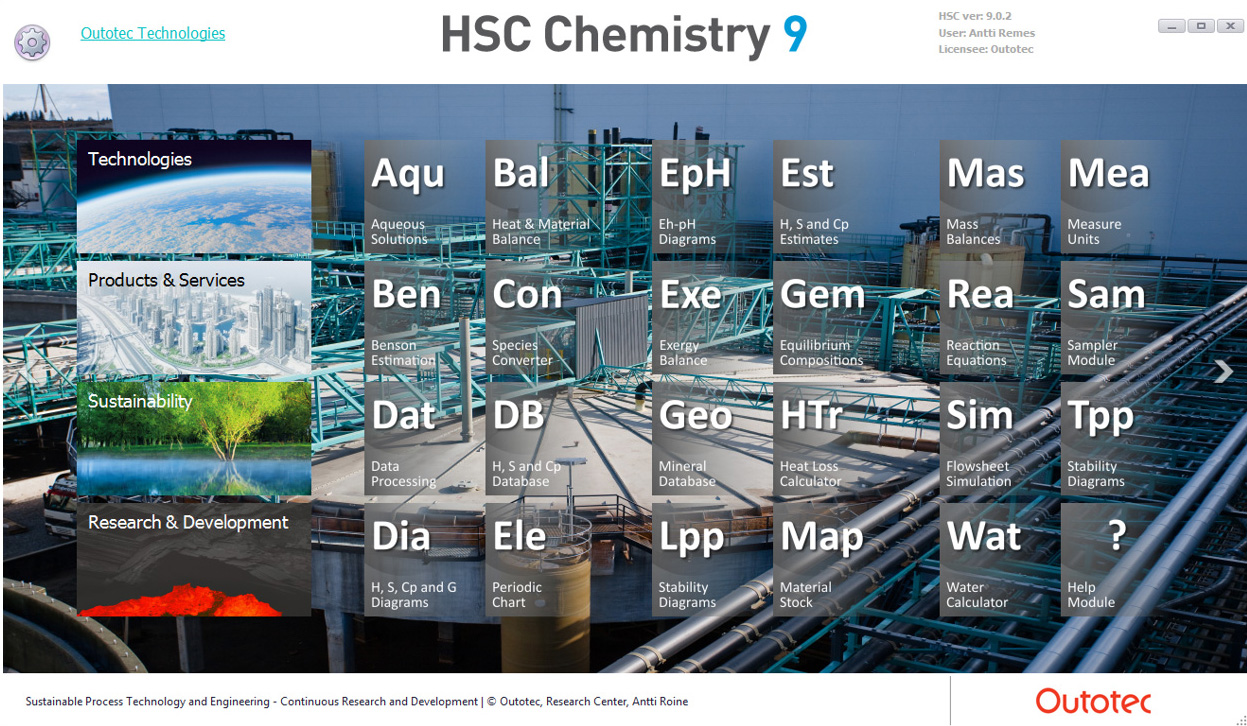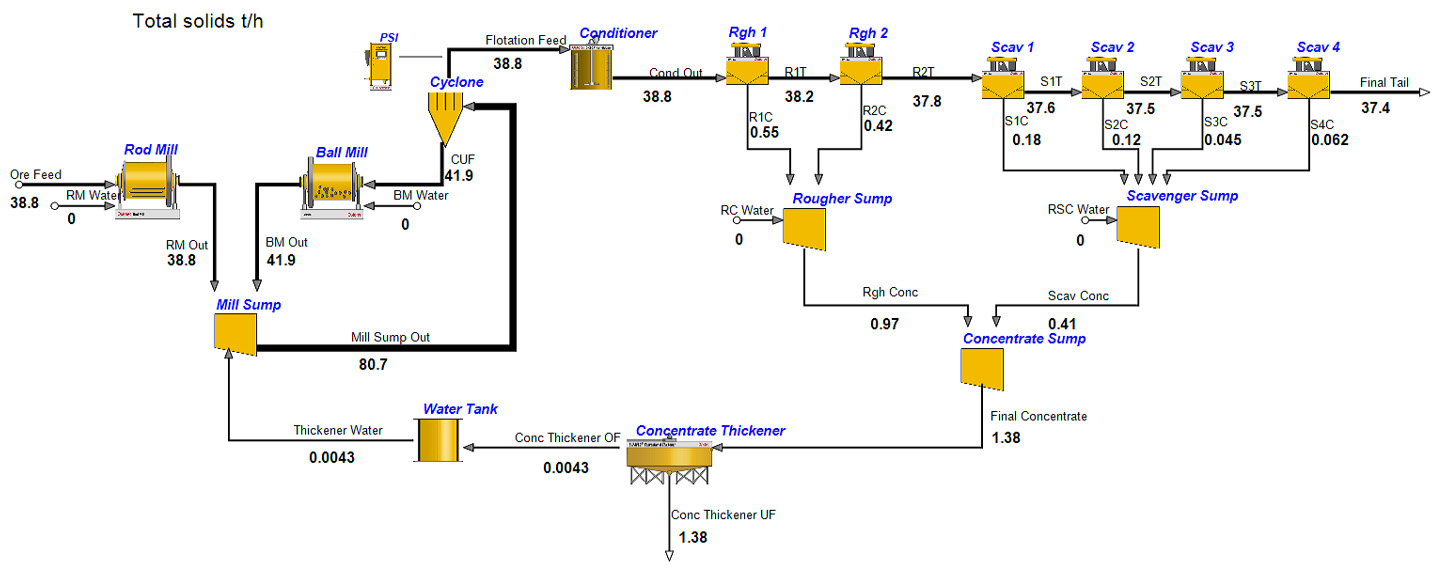This article is the first one of a series of three articles covering mass balancing, process simulation, and bottlenecking and optimization of flotation plants.
Data reconciliation procedure
In mass balancing, or in other terms data reconciliation, the basic idea is to maintain the unit balances: everything that goes into a unit must come out. A powerful data reconciliation tool is required to establish reliable mass balances of concentrator plant circuits. Outotec´s HSC Chemistry® 9 software package includes such a mass balancing module, converting the raw measurements to full plant wide grades and recoveries of each process stream.
The process measurement data can consist of flow rates, elemental or mineral assays, size fraction analyses (can be extended with assays by fraction) and solids percentage measurements. Data reconciliation algorithms utilize known process and measurement variations, namely standard deviations. They will assist the computation algorithm, and determine whether each measurement should be adjusted to hold the ‘output equals input’ balance over all the process units in the plant.
The data reconciliation algorithms will minimize the total Weighted Sum of Squares between the original measurements and the balancing results, weighted with the standard deviations of the measurements; covering all plant data. Powerful matrix-based calculation methods are required to solve the balance. The HSC Chemistry Mass Balance uses so called Element-wise Weighted Total Least Squares (EWTLS) method to first calculate the mass flow rates. The method is robust, since it utilizes also the available assays and their accuracies for solving the bulk flow rates. Next, the component assays are solved using Equally Constrained Weighted Ordinary Least Squares. In addition, bulk and component recoveries are calculated automatically for the plant streams. If some measurements are partly or totally missing in some of the process streams, the calculation algorithm can estimate them mathematically in numerous cases.
From process sampling to overall circuit mass balance
Mass balancing can be done for all process types covering laboratory tests, pilot plant runs and full scale mineral beneficiation plants. In this example the Vammala gold ore flotation plant in southern Finland was sampled for the circuit balance and recovery calculation. The samples were collected from all of the main streams of grinding and flotation sections. Flotation cells were sampled from the launder lip for concentrates and dip sampler inside the cells for tailings. The concentrate flow rates were estimated with timed samples. All of the samples were assayed for solids-% and Au, Bi and Te grades. The raw measurement data was fed to the HSC Mass Balance module. In addition, the measurement variability (standard deviations) were determined by repeated samples and entered to the mass balancing software as well. As a result of the mass balancing, accurate flow rates and component assays were obtained, with automatic visualization as seen in the flowsheet diagram below. Also, estimates of the +/- confidence intervals are given for each result.


